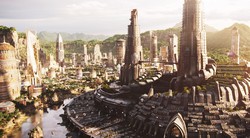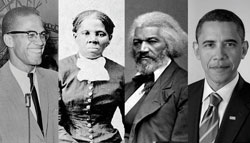Walter Greason, Ph.D., Associate Professor and Chair of the Department of Educational Counseling and Leadership, presented “Wakanda, Afrofuturism, and the Future of Cities” as part of the “Future of Cities” speaker series hosted by the School of Public and International Affairs at Virginia Tech on Wednesday, Apr. 17.
Greason is the creator of the Wakanda Syllabus, a bibliography of resources meant for exploring the artistic and cultural context of Marvel’s Black Panther comics and the fictional African nation of Wakanda.
When it comes to the design of Wakanda, it took a considerable amount of time and effort to settle on a design that could speak to African cultural diversity, but remain accessible and recognizable to a variety of people around the world, Greason explained.
“[The design of Wakanda] challenges the notions that have been embedded in Africa as a rural continent; a place that did not have urban spaces,” Greason said. “To do that in a relatively short frame [of the film] and to make that impression so people could engage the notion of this fictional nation took years.”
Within the film, protagonist Chadwick Boseman says the phrase “This never gets old” when he sees Wakanda. This moment signifies the narrative, ancestral history and vision of the African continent, Greason explained.
“Seeing the ideals and possibilities of a liberated African diaspora taps into something deep and emotional that counters generations of film that stereotyped and dehumanized people of African ancestry in any number of ways,” Greason said. “[It’s] about bringing a global array of voices into media, television, movies and audiobooks. The sentence “This never gets old” is the feeling of many folks I’ve worked with for 20-25 years, that opening experience of a fictional African nation that had never been touched by colonialism, slavery and segregation.”
As Jack Kirby and Stan Lee were writing Fantastic Four comics in the mid-1960s, they wanted to do a storyline based in Africa, Greason explained. The duo wanted to create a portrayal of Africa that countered stereotypes of poverty and lack of development.
“They wanted it to be comparable to the things they have seen and written about, like Thor and Asgard,” Greason said. “They wanted it to be an ideal place, essentially a black utopia for people of African descent and African heritage.”
Through the 1970s, the concept became a parallel of Tarzan mythology, Greason explained. The Black Panther became a Tarzan allegory of struggle against a variety of primitive forces trying to maintain an advanced society. “[The protagonist] is being cut, bloodied and he’s being knocked out; struggling to overcome extraordinary physical adversity to ultimately triumph in the end.”
These two generations of stories were not challenged as a framework until the late 1990s. Wakanda does not develop into the modern iteration that audiences are familiar with until Christopher Priest, a novelist and science fiction writer, began to infuse The Black Panther with Hollywood blaxploitation and cinematography, Greason said.
“[The author] takes those kinds of images, then the sense of the country itself,” Greason said. “He says Black Panther is not a superhero, but rather a combination of a Prime Minister, a monarch and a religious figure of hope. His powers are not about energy rays or about the different kinds of spectacular tools that he’ll put forth, but it’s about his political sophistication. His wisdom, his spiritual grounding among his people, and Priest changes the entire formulation.”
IMAGE TAKEN from TIME.com



